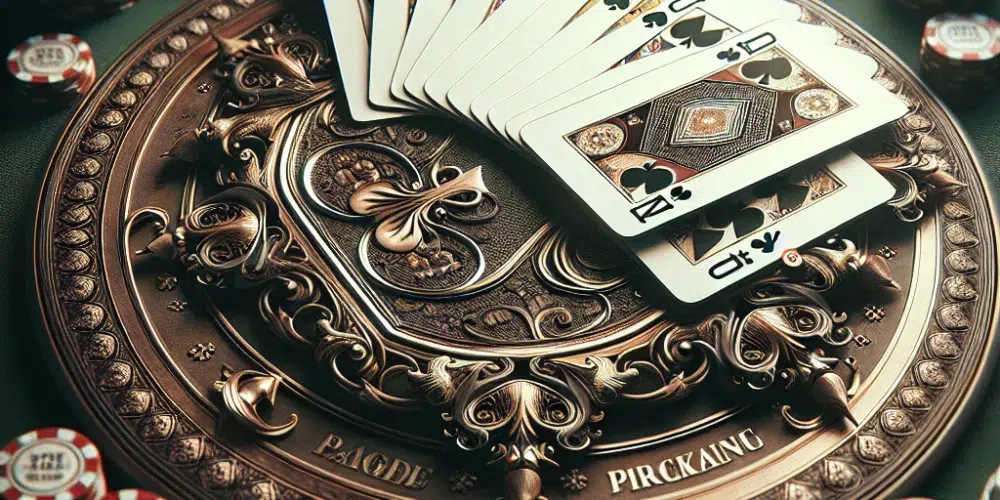Origin and Evolution
Seven Card Stud was once the most popular poker game in the United States, a title now held by Texas Hold’em. Originating during the American Civil War in the 1860s, it represents the quintessential form of traditional poker, without the community cards used in many modern variations.
Spread of the Game
The game spread rapidly from American military encampments and continued to grow in popularity through both World Wars, becoming a staple in casinos and private games alike. Its allure was partly due to its complexity and depth, which allowed for deeply strategic play.
Basic Rules of Seven Card Stud
Seven Card Stud does not utilize community cards, setting it apart from variants like Texas Hold’em and Omaha. Each player begins with two cards face down and one card face up. Rounds of betting follow as each of seven cards is dealt to players individually, three facing down and four facing up by the game’s conclusion.
Game Structure
The game proceeds through five betting rounds. After the initial deal (two down, one up), the player with the lowest exposed card starts the first round of betting. Additional cards are dealt individually with a round of betting after each card, culminating in each player possessing three face-down cards and four face-up cards.
Unique Features of Seven Card Stud
One of the unique aspects of Seven Card Stud is the importance of memory and observation. Players must remember discarded cards and minutely observe opponents’ up-cards to predict their possible hands. This requirement adds a layer of skill that is less pronounced in community card games.
Door Card Strategy
The first up-card, known as the “door card,” is critical for setting initial strategy. A high-value door card could intimidate other players, while a low-value card might offer a deceptive approach to the game.
Strategic Approaches to Seven Card Stud
Advanced strategies in Seven Card Stud revolve around card memory, disciplined hand selection, and precise reading of opponents’ visible cards. Starting hand selection is critical; players look for three-of-a-kind, high pairs, or cards that are close in sequence and suit.
Bluffing and Reading Tells
Bluffing can be more difficult due to the amount of information visible through up-cards, but it remains an essential tool in a skilled player’s arsenal. Reading opponents’ tells and betting patterns also becomes crucial, especially in closed games with frequent players.
Player Appeal of Seven Card Stud
Seven Card Stud attracts players who appreciate a slower-paced, more contemplative poker experience. Unlike the rapid-fire action of Texas Hold’em, Seven Card Stud emphasizes patience, meticulous planning, and psychological warfare, appealing to the traditionalist and the strategist.
Why It Remains Popular
Despite the rise of faster, more dynamic poker variants, Seven Card Stud holds a dedicated following. Its rich strategic depth and the personal challenge it poses keep it popular in many pockets of the poker world, from high-stakes casino rooms to friendly, competitive home games.
Key Takeaways
Seven Card Stud remains a testament to the rich heritage and intricate skill of traditional poker. It offers a distinct blend of strategy, memory, and tactical gameplay that stands apart in the modern poker landscape.
FAQs
Is Seven Card Stud more difficult than Texas Hold’em?
Yes, generally, it requires more memory and attention to detail given the lack of community cards and the number of cards each player holds.
Can you still find Seven Card Stud games in casinos?
Yes, many major casinos offer Seven Card Stud tables, though they are less common than Texas Hold’em or Omaha.
What is the best starting hand in Seven Card Stud?
The best starting hand typically is three-of-a-kind, also known as a “rolled up” set of trips in Seven Card Stud parlance.

















